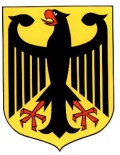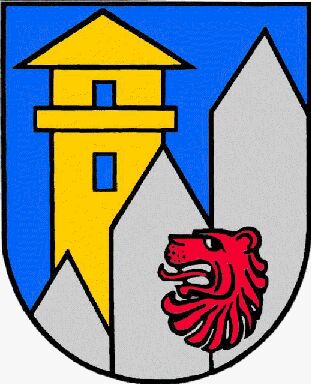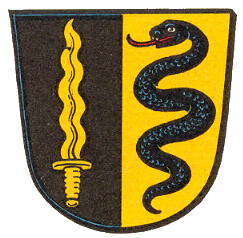Pohl (Nassau): Difference between revisions
Knorrepoes (talk | contribs) m (Text replacement - "/Arms of " to "/Arms (crest) of ") Tags: Mobile edit Mobile web edit |
Knorrepoes (talk | contribs) m (Text replacement - "{{media}}" to " {{de1}} {{media1}}") |
||
| Line 30: | Line 30: | ||
The arms are based on the oldest known seal of the village, dating from 1568. The seal showed the local patron saint, St. Michael, killing a dragon. This is symbolised by the flaming sword, the common symbol of St. Michael, and a snake for the dragon. | The arms are based on the oldest known seal of the village, dating from 1568. The seal showed the local patron saint, St. Michael, killing a dragon. This is symbolised by the flaming sword, the common symbol of St. Michael, and a snake for the dragon. | ||
{{ | |||
{{de1}} | |||
{{media1}} | |||
[[Civic Heraldry Literature - Germany|'''Literature''']]: Hessisches Wappenbuch, 1956 | [[Civic Heraldry Literature - Germany|'''Literature''']]: Hessisches Wappenbuch, 1956 | ||
Revision as of 11:20, 26 December 2022
This page is part of the German heraldry portal Deutsche Wappensammlung |
Heraldry of the World |
|
German heraldry:
|
Selected collector's items from Germany:
|
POHL
State : Rheinland-Pfalz
District (Kreis) : Rhein-Lahn Kreis (until 1969 Unterlahnkreis)
Verbandsgemeinde : Verbandsgemeinde Nassau (until 2019 Verbandsgemeinde Bad Ems)
| German | |
| English | (Nassau) No blazon/translation known. Please click here to send your (heraldic !) blazon or translation |
Origin/meaning
The arms were officially granted on ??
Unfortunately we have no information on the meaning or origin of these arms yet.
If you have any information on the origin or meaning of these arms, or have additional images that you want to share, please mail us your information !
The arms below were proposed in 1956.
The arms are based on the oldest known seal of the village, dating from 1568. The seal showed the local patron saint, St. Michael, killing a dragon. This is symbolised by the flaming sword, the common symbol of St. Michael, and a snake for the dragon.
Literature: Hessisches Wappenbuch, 1956



